One of the side effects of growing food in your backyard is that your garden becomes alive. If you are growing organic and do not use any industrial poison in way of insecticide, herbicide, fungicide or any other of the “cides”, you are helping to preserve the small creatures at the bottom of the food chain, from the soil microbes and worms to hordes of butterflies and insects that crawl, leap or fly about as your neighbours. And if you do not mow your lawn constantly to prevent wild flowers to bloom, and let the grass grow long before each mow, you allow a whole lot more of food for even larger animals such as rabbits and hares.
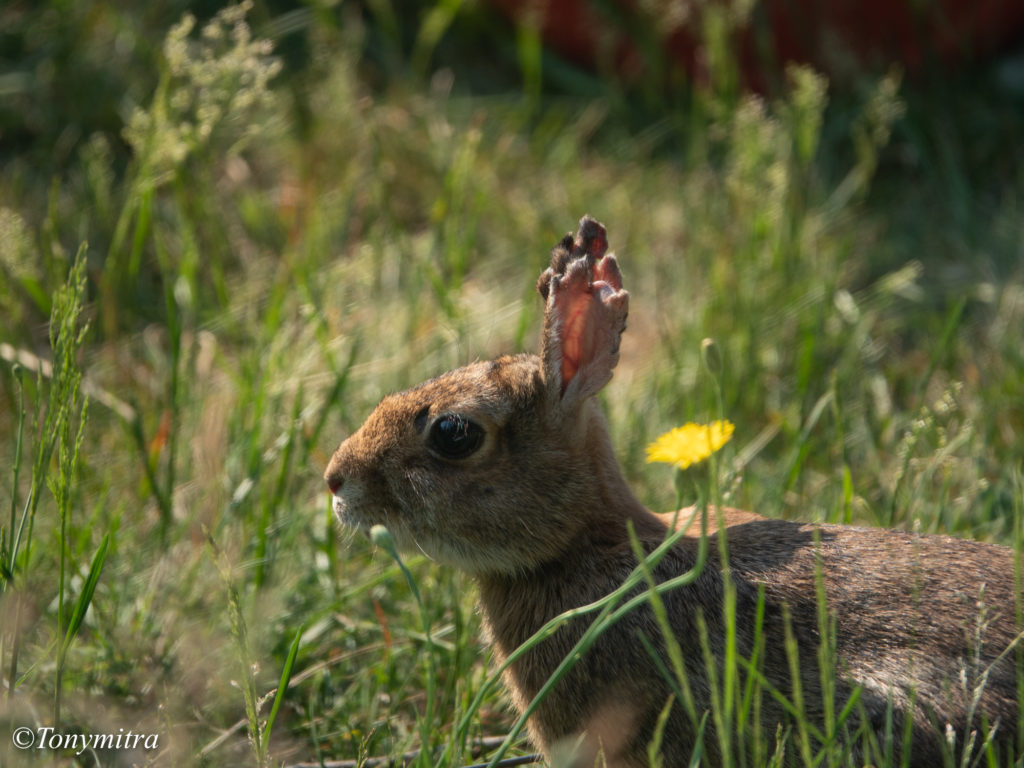
Along with all these creatures, come the creatures up the food chain that like to feast of these. You get a look-see and overhead flyby or perching on nearby tall trees by birds of prey like hawks and eagles that notice the frequency of rabbits and hares visiting your garden, primarily to eat the flowers and long leaves of the wild dandelions.
Meanwhile, the profusion of flowers – from large orange bright ones from the pumpkins and squash, to tiny ones on some cilantro plants that I am allowing to produce seeds for the next season growing season – attract a huge horde or insects, from crawling ants to all kinds of flying insects from multiple types of bee to various kinds of butterflies.
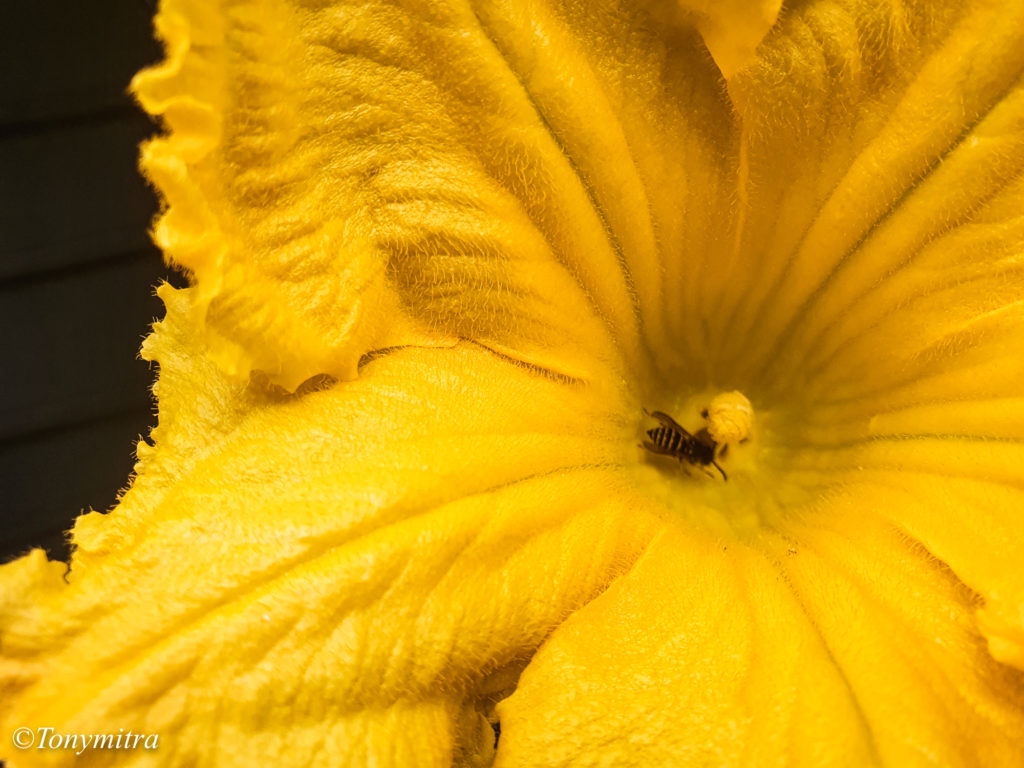
Then there are insects that also like to eat at the ripping fruits around the garden – from crab apples to cherries plums and figs. These fruits will also attract fruit eating birds.
This profusion of insects in turn attract an unbelievable variety of eight legged spiders that make their webs in critical locations, hoping to snack on the profusion of these flying meals. Most insects have six legs and two antenna, while spiders belong to a different group of joint legged invertebrates called arachnids, and are grouped with scorpions, ticks, and mites. They all have eight legs. The thing is, many of these spider like creatures are also in loose soil, and often come appear when I dig into them with my fingers to check it. They come up, along with centipede and millipede, and immediately get busy trying to bury themselves back in dry loose soil. Worms on the other hand, will prefer wet or moist soil. All these, too, are meals for other creatures, such as birds.
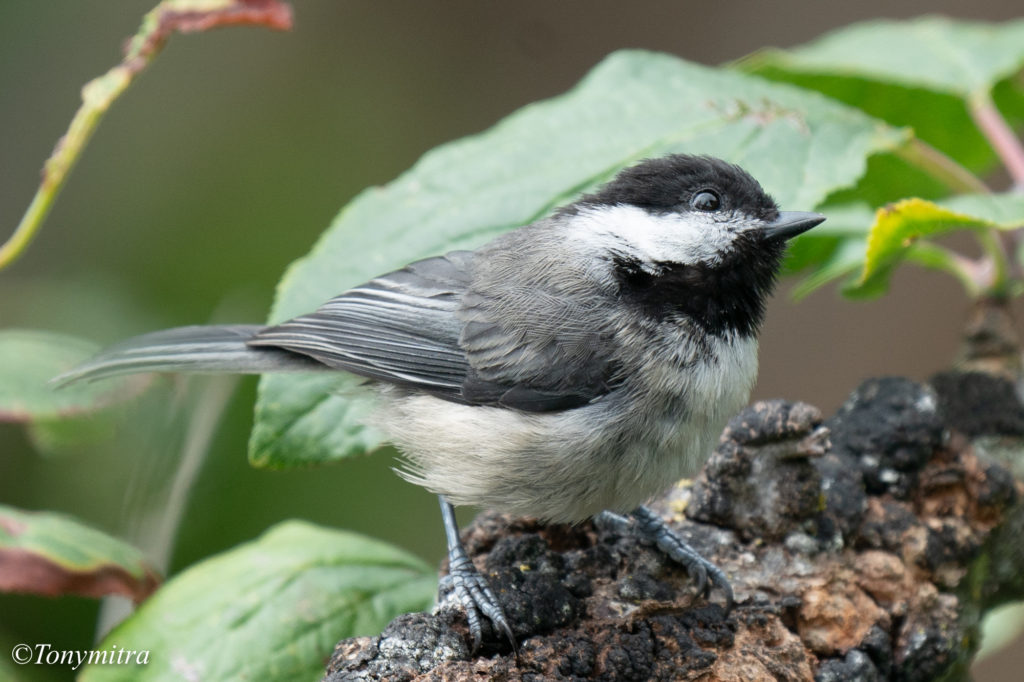
And thus come the insect eating birds, who will go for both the flying insets as well as insect catchers like the spiders.
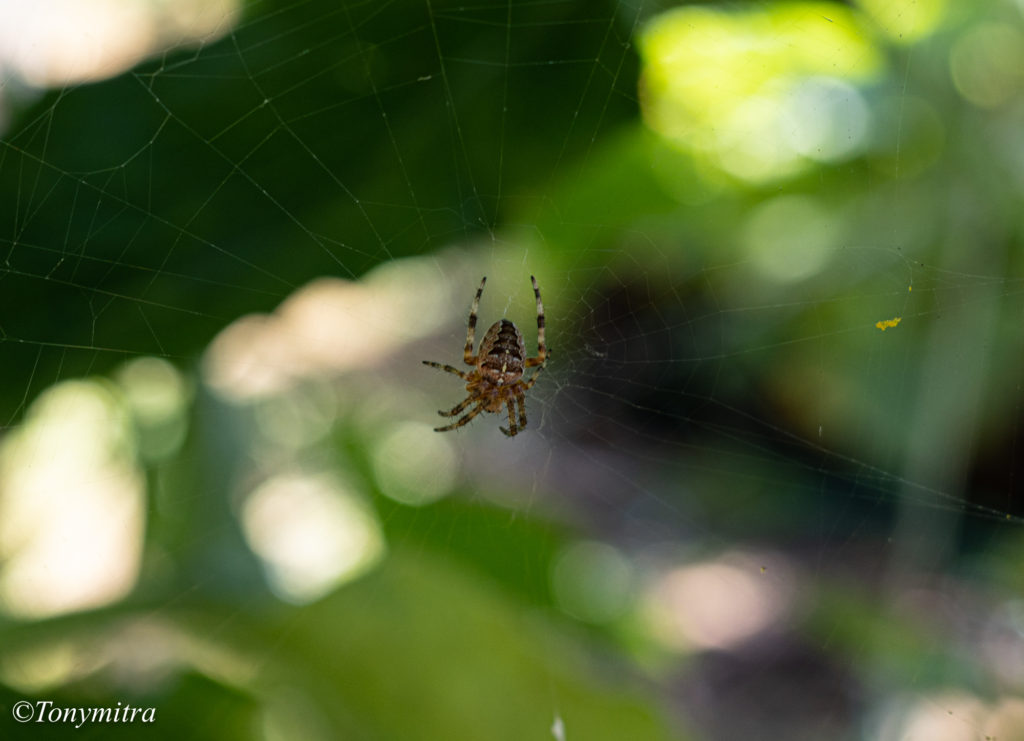
Most of us know of birds like chickadee and hummingbirds. We think chickadees eat seeds and hummingbirds feed on flower nectars. True. But these birds are also prolific insect eaters. Therefore, they are constantly on the move in the garden, often in large numbers, looking for a more mobile form of meals compared to honey.
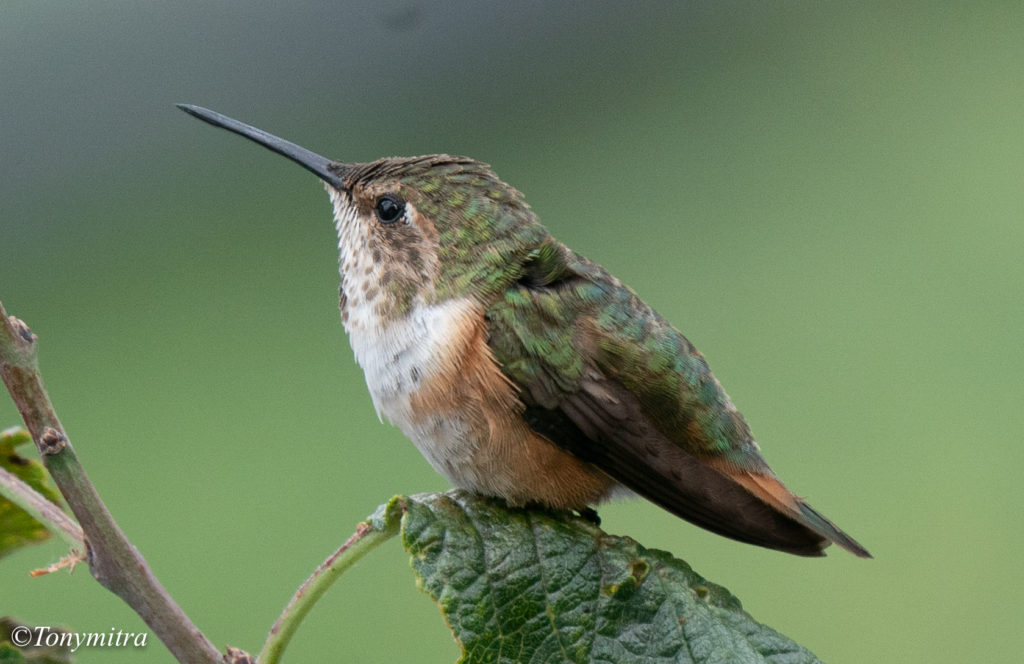
Then there are the wrens, tiny group of perching birds that are insect eaters and known for taking a special liking to spiders. One of these shy birds, called Bewick’s wren, have been making nests in or near my garden and raising chicks successfully year upon year. That is one reason I have a few bird boxes placed in my backyard, often used by small birds to make their nests.
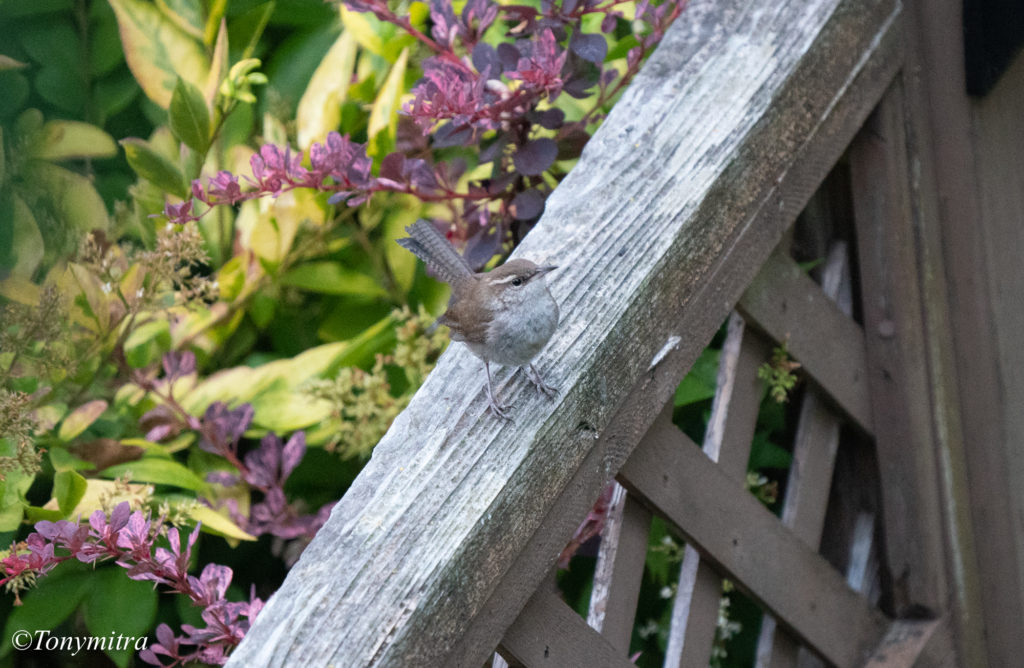
Two hummingbirds are common sights in British Columbia. One is the resident one that has evolved to survive the high latitude winters. This is the Anna’s hummingbird. The other, also highly visible in the warmer months, is a summer visitor from south of the border. This one is the rufous hummingbird. In many ways, they look similar. Both are same size and more or less same shape, and look greenish from the back.
The main difference by which one can distinguish one from the other, is that the Anna’s hummingbird has absolutely no rufous – brick colour – anywhere on them, while the rufous hummingbird has on its sides and even belly. There are other subtle differences that one might miss – such as spots of white around the eyes of the Anna’s and the fact that, I think, the Anna’s hummingbird’s beak has the hint of a slightly downwards droop. The rufous, in my view, has a dead straight beak, like a fencing sword.
Anyhow, both of them will take insects. Also, there are many flowers that they like to poke at and sip from. Further, most of us have a few hummingbird feeders hanging around. So hummingbirds are here. They are usually not scared of humans. At times, one comes within a food of my face, hovers in the air for a second or two, to take a close look at the red coloured emblem on my cap, just to figure out if it is a flower or not. Convinced it is not a flower, it flies away. Usually they are too close and too sudden for me to click a picture so close to me. Perhaps one day I will get one.
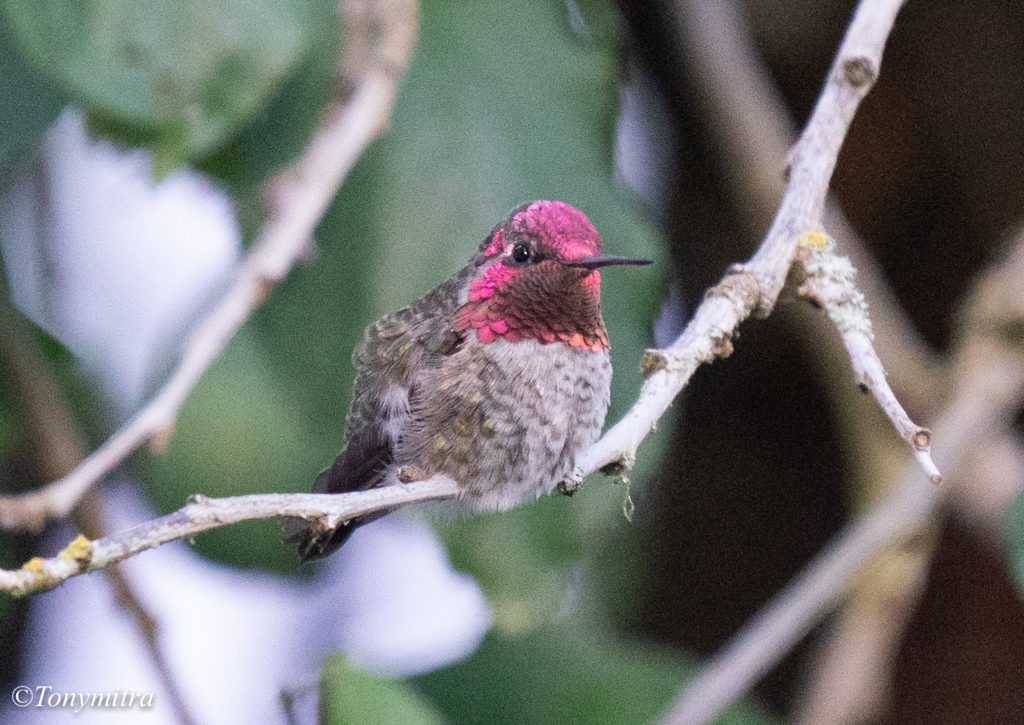
Hummingbirds have two kinds of coloured feathers. Some are fast colours and others have structural colour. What is fast colour and what is structural colour. Well, we all know what is fast colour. That is colour on our fabric or paper that are not water soluble and will not wash away. The colour is there to stay.
Structural colour is something else. They are largely made of feathers that have colourless transparent parts, which, when flexed at the correct fashion by the bird and the lighting is good, what happens is that sunlight refracts internally, splits up like when passing through a prism, and only some selective colours end up reaching the eyes of the observer. These are structural colours. They appear to have a hue, and in some cases the colours can even change depending on angle of view, giving the feathers appear iridescent.
The male hummingbirds, both Anna’s and Rufous, have special feathers at its throat that they can flare up in a way where they look like shimmering pink, for an Anna’s, or more brighter red for a Rufous hummingbird. These throat feathers for the males are display feathers, for impressing potential females. These are called Georgettes. The same feathers, when not flexed, and kept tucked in, appear blackish and dull. The bird can control the colours of their georgette as and when needed.
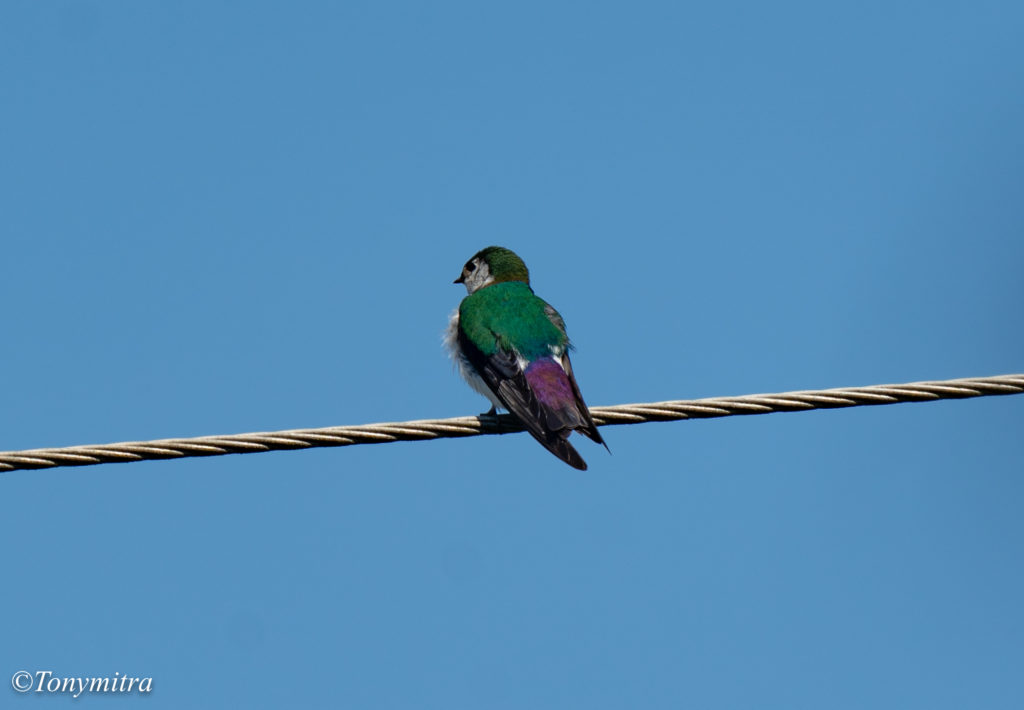
And we should not forget the swallows, such as the colourful violet green swallow, which is also an insect eater.
These are the creatures that make my garden a living garden, and part of the reason is that I grow food without poison, and let the grass grow taller and weeds make flowers instead of constantly mowing them. When the grass grows tall enough, I mow it in one shot and the huge amount of grass mulch is then used as bedding for some vegetable patch, to be composted and returned back to the soil by microbes. All this, in turn, helps to keep the garden alive.
